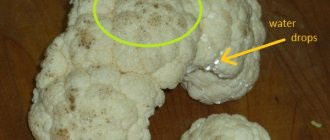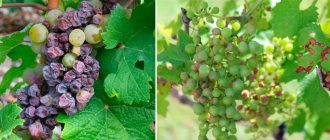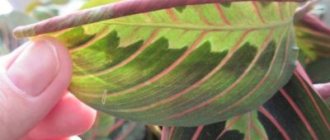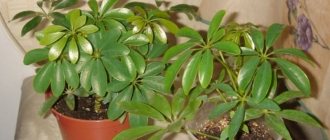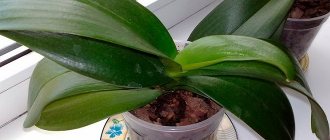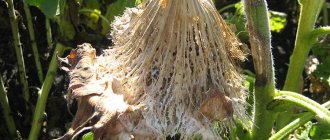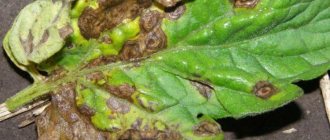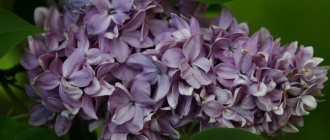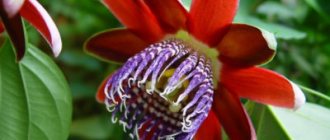Viral diseases
Viruses are very dangerous because they quickly spread through soil, pollen, etc.
The shrub may suffer from:
- chlorotic leaf spot;
- mottling;
- ring mottling;
- ring spot.
If a bush is infected with a virus, then signs can be noticed already in early spring. The leaves suffer first, then the flowers. Each virus manifests itself differently. Yellow spots are visible on the leaves; they can cover the entire leaf blade or part of it. The spots can also be brown and white. The shape of the spots can be rings or semi-rings, this is how the virus manifests itself. If the disease is not treated or prevented, the plant is completely affected. The leaves curl and fall off. Inflorescences behave the same way.
Chlorotic leaf spot of lilac:
Control and prevention measures
Diseases and pests of lilac depress the bush: they are also dangerous for other plants. Combating them involves the use of various methods. The most popular of them are chemicals and folk remedies.
Chemicals are diluted with water in the required concentration. Be sure to use personal protective equipment. Treatments are carried out in dry, cloudy weather. The frequency of spraying is no more than once every 7-10 days.
Folk remedies are safe for plants and humans. Such methods have no restrictions in use and are well suited for prevention. These include infusions of wormwood, onion and garlic peels, tobacco dust, and wood ash. Lilacs are dusted or sprayed with a solution.
Special measures are taken to prevent diseases and pests. To do this you need:
- use high-quality planting material, without defects and signs of damage;
- perform sanitary pruning of shoots;
- do not injure the cortex, monitor its condition;
- remove fallen leaves in autumn;
- regularly feed lilacs with mineral complexes;
- observe the dosage of nitrogen fertilizers;
- dig up the soil in the fall;
- periodically spray the bush with solutions of insecticides and other preparations.
Mycoplasma diseases
The most famous of these ailments is paniculation. It manifests itself in the fact that the lateral stems are encouraged to grow, but the internodes do not change. As a result, the branches form into small bushes. The leaves become smaller, dwarfism appears and the plant soon dies.
Mycoplasma is also the cause of the development of:
- chlorosis;
- rosetteness;
- small leaves;
- jaundice;
- abnormal branching.
If these lesions progress greatly, the bush will die.
Treatment with lilac tincture
To activate the beneficial properties of lilac as part of the tincture, you need to know the scheme for its use. For the treatment of various diseases, variations of the basic recipe are also offered, which should not be ignored: this will enhance the effectiveness of the remedies.
Kidney diseases
100 grams of lilac leaves are poured with 2 liters of alcohol. Then everything follows the usual recipe. Take 20 drops before meals (you can add them to tea or drink separately) three times a day.
High temperature, fever, malaria
Rinse 100 grams of fresh lilac leaves with water, put in a liter jar, add 2 grams of fresh wormwood, 1 gram of eucalyptus oil. Pour vodka (1 liter), leave in a dark place under a lid for 20 days. If the temperature rises, drink 50 grams of tincture before eating. If it doesn’t help the first time, repeat three times a day.
Wounds, bruises, injuries, ringworm
Pour 1 glass of fresh lilac flowers into a glass jar with 500 ml of vodka, leave under a closed lid in a dark place for 2 weeks. Change lotions 5 times a day.
Lower back pain, rheumatism
Lilac tincture is also used for joints, spine, bones, relieving pain syndromes. Pour 1 glass of fresh lilac flowers in a glass jar with 500 ml of alcohol (or vodka), leave under the lid in a dark place for 10 days. Rub the sore areas twice a day.
Osteochondrosis, arthritis, arthrosis
Grind fresh lilac leaves to make 2 tablespoons. Mix them with 300 g of juice squeezed from radish, 200 g of honey. Pour 100 ml of vodka, leave covered in a dark place for a day. Before rubbing the sore spot, the mixture should be shaken thoroughly.
Gout, salt deposits, rheumatism, joint arthritis
Fresh lilac flowers, without compacting them, pour loosely into a half-liter glass bottle to the very top, fill with alcohol (it is better to take 40%), close, leave in a dark place for three weeks, strain. Take 30 drops orally before meals three times a day for three months.
Heel spur
According to the classic recipe, use the prepared infusion as compresses on the affected area, changing it three times a day. In parallel with this, 30 drops are taken orally (can be with tea) before meals, also three times a day.
Sore throat, laryngitis
Dilute a tablespoon of tincture prepared according to the classic recipe in 100 ml of water, gargle every three hours.
Soak a cotton pad in the classic lilac tincture and rub it on your temples and forehead. The pain goes away within five minutes. In this case, tincture of lilac flowers is used as needed.
Fill a half-liter glass jar tightly with purple lilac flowers to the very top and compact. Pour in alcohol or vodka and leave covered for a week. Use for heart pain and attacks with a teaspoon of tincture with water.
Pour 30 grams of fresh white lilac flowers into a liter glass jar, fill with vodka to the very top, leave under the lid for two weeks in a dark place. Drink before bed, pouring 30 ml of tincture with a glass of hot tea.
Lilac is such a unique shrub: the use of its tincture in folk medicine helps alleviate many painful conditions that sometimes even medications cannot cope with. If everything is done correctly, the benefits of this remedy will not take long to arrive, and many of the ailments will recede.
Fungal diseases
There are a lot of fungal infections. It is necessary to familiarize yourself with the methods of combating those that are most often encountered and know how they manifest themselves. Mushrooms may be constantly present in the soil, but not show themselves in any way. As soon as favorable conditions arise, the fungi begin to actively infect the bushes.
How does a fungal disease begin? Spots of various sizes, shapes and colors form on the leaves. The most common fungal infections:
- brown spot (phyllostictosis);
- rust;
- perforated spotting;
- powdery mildew;
- withering.
Brown spotting is a gray-brown color with a darker outline. The disease acts gradually, affecting part of the leaf, and then the entire plate. The leaves become covered with holes, then curl and fall off. This disease progresses with high humidity, usually in late summer. Fungi love humidity and temperatures around +25°C.
Hole spot is characterized by brownish-yellow spots. Causes rotting of inflorescences. The leaves and flowers are covered with an olive-black coating.
Powdery mildew is also a fairly well-known fungal disease. Covers the plant with a powdery gray-white layer. The optimal conditions for the development of this fungus are hot weather and dry air.
Wilting also belongs to fungal diseases. It causes the leaves on the lilac bush to turn brown, curl and fall off.
Powdery mildew:
Lilac pests and their control
Lilac pests feed on buds, leaves, flowers, and branches. As a result, the development of the bush slows down, fewer inflorescences appear, and leaves and shoots are deformed.
Lilac moth
If the lilac has leaves with brown spots, this is the first sign of the appearance of lilac moth in the area. Its caterpillars feed on the leaves of the bush, which turn brown, curl up into tubes and die. At first glance, the plant appears to have been damaged by fire.
Lilac moth butterflies fly out in mid-May - early June. Over 5-6 days, the female lays several hundred eggs on the underside of the leaf. After 5 - 10 days, caterpillars appear and destroy the leaf blade. The second generation caterpillars appear at the end of September. Their pupae overwinter in the soil at a depth of up to 5 cm.
Spraying lilacs with Inta-Vir, Iskra, Karbofos helps fight the pest. The first treatment is carried out at the beginning of flowering and repeated after 3 weeks. Affected shoots are cut off and burned.
Lilac tick
The lilac mite is a dangerous pest that is invisible to the naked eye. Its dimensions do not exceed 0.2 mm. The mite damages the lilac buds, which swell and dry out on the branches. The pest feeds on the sap of young leaves. It overwinters inside the buds and begins to reproduce in early spring. Several generations appear during the season.
Spraying with Carbolineum emulsion at a concentration of 6% helps get rid of lilac mites. Treatment is carried out in early spring. During the growing season, a 0.1% solution of the drug Thiophos is prepared. Spraying is carried out in June during the period of active reproduction of the pest. For prevention, lilac seedlings are kept in a barrel of water before planting.
Acacia false scale
The acacia false scale insect is a small insect measuring no more than 3 - 6 mm. Its body is oval, dark yellow or brown. Pest larvae feed on lilac juice. As a result of their activity, the size and number of leaves decrease, which fall prematurely. The shoots become deformed and dry out.
The false scale insect lays eggs during May. The first larvae appear in the second half of June, the subsequent ones in early August. The pest overwinters in the bark, cracks on branches, and at the base of branches.
To get rid of acacia false scale, use the drugs Ditox or Sumition. Such products are effective and are not washed off by rain. In private farms, universal insecticides are used - Fufanon and Iskra.
Advice! Lilacs are sprayed before and after flowering. For processing, choose a cloudy day, morning or evening.
Weevil
The weevil is a small beetle that feeds on lilac leaves. After this, holes of various sizes remain in the sheet plate. The root shoots and leaves of the lower and middle tier suffer the most from the pest.
During the day, weevils are found in bark cracks or fallen leaves. The period of activity occurs in the evening and night. Pests overwinter in bark or soil.
During the growing season, lilacs are sprayed with Fufanon Expert, Vantex, Inta-Ts-M. The product is diluted with water according to the instructions and sprayed on the bush. The consumption of the working solution is 2 - 5 liters per bush. Digging up the soil in the fall gives good results. The weevil ends up on the surface of the earth and dies when the temperature drops.
Apple comma scale
The apple scale insect is a representative of proboscis insects. The female parasite has a gray-brown elongated scute 3 mm long. Males are reddish-gray and small in size. The eggs of the pests are white, oblong, and overwinter under the shields of dead females. The larvae appear at the end of May and spread throughout the bush.
The larvae adhere tightly to the shoots and form a shield. Under favorable conditions, the scale insect multiplies quickly and covers most of the lilac branches. The shrub weakens, produces few inflorescences and becomes depleted.
The systemic drug Ditox helps fight apple scale. Pests die in the first hours after treatment. The drug is not washed off by rain. For prevention, be sure to thin out the crown, cut out root shoots, dry and damaged shoots.
Rose leafhopper
The rose leafhopper is a narrow insect up to 3.5 mm long with green-yellow wings. The eggs of the pest overwinter in the bark at the tops of young shoots. The larvae appear when the leaves bloom in late April - early May. The pest feeds on the sap of leaves. As a result, numerous white spots remain on the leaf plate.
To combat the pest, insecticides Ditox or Alfashance are chosen. The drugs are used in small doses. Their effect appears within a few hours after treatment. The solutions are not washed away by precipitation and remain effective when weather conditions worsen.
Bacterial diseases
Bacterial rot is caused by bacteria of the genus Pseudomonas syringae. Leaves, stems, flowers and buds are affected and wither. External signs are small wet spots, which later turn black and grow. Watery and oily spots lead to drying of shoots and leaves.
Mechanical damage leads to infection. The pathogen is carried by rain. Brown stripes appear on the trunk, then the bark rots and the branches dry out.
Heavily moist soil with a high nitrogen content leads to the development of bacterial infection.
Bacterial rot:
Contraindications for alcohol tincture of lilac
This medicinal shrub is also a poisonous plant, so internal use of its tincture requires caution. It turns out that lilac combines beneficial properties and contraindications, and they especially relate to alcohol tincture
It is contraindicated for:
- amenorrhea (this is a long delay in menstruation);
- chronic renal failure;
- atonic constipation;
- severe stomach diseases;
- glomerulonephritis.
In all other cases, treatment with lilac is permitted without fear. If you have chronic, protracted diseases that are under the control of a doctor, it is recommended to take a preliminary consultation with a specialist so as not to harm the body.
Popular varieties of lilac
Jeanne d'Arc
A variety of common lilac, bred by E. Lemoine in 1902. A spreading pyramidal bush of medium height. The variety is double, with snow-white inflorescences that have a strong, persistent aroma. The inflorescences are round, up to 15 cm long. The flowers are large, up to 2 cm in diameter, consisting of two corollas. Flowering is abundant and lasts for 15-17 days.
Marceau
A lilac variety bred by E. Lemoine in 1913. A spreading tall bush. The peculiarity of the variety is its very large flowers (up to 3 cm in diameter). The color is dark purple, the flowers are collected in loose inflorescences up to 24 cm long. The buds are dark red with a purple tint. Bright yellow stamens are visible in the opened flowers. The aroma is average. Flowering is moderate, lasting 14 days.
Madame Lemoine
A classic variety, one of the first to be bred in the 19th century. the founder of lilac selection, V. Lemoine. The variety is still very popular in the world. The bushes are tall, large, and straight-growing. The variety is double, the flowers consist of two tightly connected corollas. The color is snow-white, the flowers are collected in pyramidal inflorescences up to 20 cm long. The aroma is strong and persistent. Flowering is abundant, on average, lasting up to 17 days.
Paul Hariot
A foreign variety, bred by the French breeder E. Lemoine in 1902. The bush is of medium height and spreading. The variety is double, the flowers consist of two tightly pressed corollas. The buds are purple-violet in color, the opened flowers are purple, and the underside is silvery. The aroma of the flowers is weak and subtle. The flowers are collected in dense narrow pyramidal inflorescences up to 16 cm long. Flowering is early, abundant, and lasts 15-17 days.
Ami Schott
A foreign variety, bred by E. Lemoine in 1933. The bushes are vigorous, large-sized, with wide, strong branches. The flowers are double, large (2.5 cm in diameter), consisting of two tightly connected corollas with wide oval petals. They have a dark cobalt blue color, slightly lighter on the underside. The inflorescences are pyramidal, large (25 cm long and 14 cm in diameter). The aroma is strong. Flowering is moderate, lasts 14-15 days.
Sensation
A foreign variety bred by the Dutch breeder E. Maarse in 1938. One of the most popular varieties in Europe. The bush is upright, of medium height. A distinctive feature of the variety is the rare, unique color of its flowers - they are purple with a wide white border along the edge of the petals. The variety is not double, simple flowers are collected in pyramidal inflorescences up to 19 cm long. The aroma is subtle and delicate. Flowering lasts 14-16 days.
Condorcet
A variety of foreign selection. It has a very tall, powerful bush with thick, strong branches. Gives a lot of growth. A distinctive feature of the variety is large dark green leaves on short petioles. The variety is semi-double. The flowers are large, 2-2.5 cm in diameter. The color is bluish-lilac, the aroma is medium. The flowers are collected in loose conical inflorescences up to 20 cm long and up to 10 cm in diameter. Flowering is medium, lasting for 14-16 days.
Beauty of Moscow
A domestic variety recognized as one of the most beautiful and popular in the world. Bred by Russian breeder L.I. Kolesnikov in 1947. The plant of this variety is a tall, large-sized bush with a wide pyramidal shape. The buds are lilac-pink, the flowers have a delicate white-pink color, double, with a medium aroma. The flowers are collected in openwork wide-pyramidal inflorescences up to 20 cm long. Flowering is abundant and lasts 14-16 days.
Kolesnikov Olympics
The variety was bred by L.I. Kolesnikov in 1941. The bush is tall and grows upright. Terry variety. The flowers have a delicate lilac-pink color, collected in openwork pyramidal inflorescences up to 20 cm long. The aroma is strong. Flowering is early, abundant, lasts up to 18 days. The name of the variety is given in honor of the breeder’s wife, who helped him in his work.
Vestal
A variety of foreign selection, bred by the French breeder E. Lemoine in 1910. A spreading, densely leafy shrub 2-3.5 m high. The variety is not double. The flowers are large, up to 2.8 cm in diameter. Collected in wide pyramidal inflorescences up to 20 cm in length. The buds are pink, and the opened flowers are snow-white. The aroma is subtle. Flowering is abundant and lasts up to 17 days.
Belle de Nancy
A variety of foreign selection, recognized as one of the most decorative in the world. It has a medium-sized, wide bush. The variety is double, the flowers consist of 2-3 corollas, large (up to 2 cm in diameter). The color is lilac-pink with a silver tint, turning into light blue at the tips of the petals. The aroma is strong. The flowers are collected in large panicles up to 25 cm long and up to 18 cm in diameter. Flowering is abundant, on average, lasting 14-16 days.
Lilac diseases. How to prevent them
Lilac powdery mildew
Lilac is one of the most decorative flowering shrubs that are of undoubted interest for landscaping. At the same time, different types and varieties of lilac are to one degree or another affected by diseases that reduce the valuable qualities of the shrub.
Leaf diseases
On lilacs, the most widespread leaf diseases are caused mainly by fungi , and less commonly by bacteria and viruses.
At a high level of damage, diseases of this group lead to premature drying of leaves, weakening and reduction of the decorativeness of the plant.
The sources of infection are fallen leaves, on which pathogens are stored in various forms of their existence.
- Powdery mildew (caused by the fungus Microsphaera (Erysiphe) syringae)
In early July, a white coating of mycelium (mycelium) appears on both sides of the leaves, often completely covering the leaf surface. In the second half of July, fruiting bodies of the fungus are formed on the mycelium in the form of small, numerous scattered black dots.
- Brown spot (caused by the fungus Septoria syringae)
In July, brown or yellow-brown spots of round or irregular shape form on both sides of the leaves. On both sides of the spots, sporulation of the fungus develops in the form of small scattered black dots.
- Ocher spot (caused by the fungus Phyllosticta syringae)
In the second half of summer, irregular ocher-colored spots appear on both sides of the leaves, surrounded by a dark border. On the upper side of the spots, sporulation of the pathogen forms in the form of small black dots. Often numerous spots merge, covering most of the leaf surface.
- Ocher-brown spot (caused by the fungus Colletotrichum gloeosporioi-des gloeosporioides (=Gloeosporium syringae))
In the second half of summer, brown or ocher-brown spots of irregular shape of different sizes appear on both sides of the leaves. With severe damage, the spots grow, merge and cover almost the entire surface of the leaves. On the spots, mainly on the lower side, sporulation of the fungus forms in the form of small flat pads of a dark brown color.
- Dark ocher spot ( caused by the fungus Ascochyta syringae)
In July, large dark ocher spots appear on the upper side of the leaves, sometimes surrounded by a darker border. On the spots, sporulation of the pathogen develops in the form of small black dots.
- Ring spot , or mosaic (causative agent - lilac mosaic virus - Lilac ringspot virus)
In early July, pale green, yellow, yellowish-white rings, half rings and stripes appear on the leaves. Later, the affected areas of tissue die and take on the appearance of brown spots and stripes.
Diseases of trunks and branches
Diseases of this group manifest themselves in the death of the bark (necrosis), damage to blood vessels (wilt), and destruction of wood (rot).
Damage to trunks and branches leads to weakening of the bush, a decrease in its decorative value and death. Pathogens penetrate into the tissues of trunks and branches through various damage to the bark.
Sources of infection are diseased plants and affected branches that were not removed after pruning.
- Bacterial burn (caused by the bacterium Pseudomonas syringae)
Young shoots and leaves are affected. In spring or early summer, elongated dying areas of brown or brown bark are formed on young shoots, clearly demarcated from healthy ones.
Necrosis grows quickly and completely rings the affected shoots, which become thin, dry out and bend into a hook.
Watery, transparent spots of irregular shape form on the leaves, which quickly darken, acquiring a dark brown color. Affected leaves dry out and do not fall off for a long time.
- Wilt , or verticillium wilt (caused by the fungus Verticillium albo-atrum)
The mycelium (mycelium) of the pathogen clogs the vessels of the trunks and branches, preventing the flow of water and nutrients. As a result, the leaves wither, become yellowish-green and dry out, and soon the entire plant dies.
On cross sections of affected trunks and branches, darkening of the outer layers of wood is clearly visible.
The pathogen persists on dead wood and plant debris in the soil in the form of resting spores for several years.
- White rot (caused by the wood-destroying fungus Irpex lacteus)
Living and dead trunks and branches are affected, in which white fibrous sapwood (peripheral) rot develops. The fruiting bodies of the fungus are thin, leathery, prostrate-bent or in the form of small caps with a white or grayish hairy upper surface and a white spiny lower surface.
How to fight
To protect lilacs from diseases, prevent them and limit their spread, it is necessary to carry out a set of measures:
- monitoring the condition of the bush and the appearance of diseases from May to the end of summer;
- use for planting healthy plants without signs of disease and various damage to the trunks;
- increasing plant resistance to diseases, creating optimal conditions for their growth and development;
- balanced use of mineral fertilizers, which eliminates excess nitrogen, which delays the aging of leaves and lignification of shoots;
- prevention of damage to the bark of trunks and branches when caring for plantings;
- pruning diseased and withered branches and removing dead plants from plantings with their immediate destruction;
- if there is a high level of damage to leaves by powdery mildew and spots, it is recommended in the summer, starting from the appearance of the first signs of the disease, to treat the plants with fungicides;
- autumn cleaning and destruction or spraying with eradicating fungicides of fallen leaves on which pathogens persist;
- strict adherence to the timing and application rates of fungicides in order to avoid a decrease in their effectiveness and negative effects on plants.
__________________________________________________
Lilac and its types
Common lilac
Lush lilac inflorescences are the main decoration of our gardens. It is generally accepted that its flowers are white and lilac, but thanks to selection, the lilac palette has been replenished with pink, blue, purple and even yellow. It is quite undemanding, resistant to urban environments and frost, prefers moderately humid, well-lit areas protected from the wind.
Rules for planting and caring for lilacs
Common lilac 'Sensation'
In this article we will talk about the intricacies of planting and caring for lilacs, so that they will delight you with their flowering for many years to come.
Lilac pruning. Basic rules and tips
Lilac is one of the shrubs for which proper and timely pruning is extremely important. It cannot be neglected.
Source: https://givoyles.ru/articles/bolezni/bolezni-sireni/
